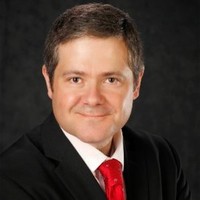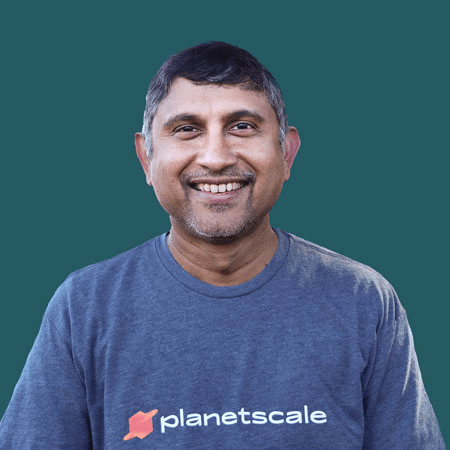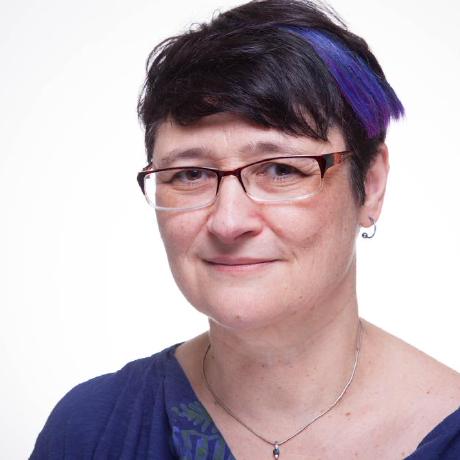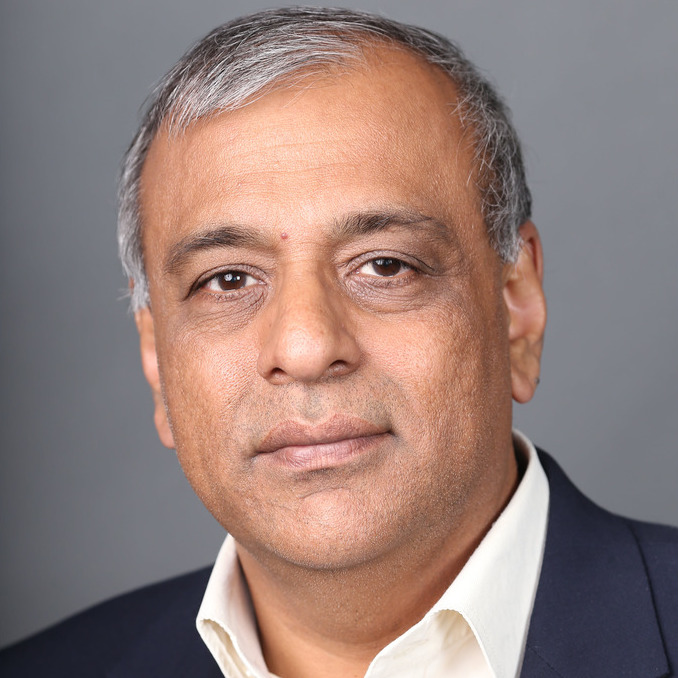
Register Here for The Next Database Platform
Join The Next Platform on August 27, 2020 for a day of in-depth interviews on a wide range of topics related to cutting-edge database trends. Much more in the article below and in the short overview below.
8/27 UPDATE: IF YOU ALREADY REGISTERED AND ARE TRYING TO LOG IN PLEASE CHECK EMAIL FOR INSTRUCTIONS OR EMAIL ABBY@NEXTPLATFORM.COM
Register Now for The Next Database Platform
Join The Next Platform this in-depth interview-based event, which will be hosted via video with live discussion features and a virtual Happy Hour for registered attendees right here on TNP on Thursday, August 27, 2020. Consider an ultra-extended, ultra-topical Next Platform TV special, same format but deeper dive interviews that follow a set program.
Update 8/17: Thanks to the generous sponsorship support we have received for this event attendance comes at no cost.
Current Agenda Below
 The IT world would have been a far simpler and easier place if the relational databases that were commercialized in the 1980s and expanded in the 1990s and 2000s could have absorbed new data types quickly and efficiently while at the same time scaling both up in larger machines and scaling out across multiple machines. To their credit, the remaining major relational databases used by enterprises – Oracle, IBM DB2, Microsoft SQL, and MySQL and PostgreSQL in their various guises – have done a pretty good job of absorbing object and XML and JSON document formats as well as adding columnar data store and in-memory options.
The IT world would have been a far simpler and easier place if the relational databases that were commercialized in the 1980s and expanded in the 1990s and 2000s could have absorbed new data types quickly and efficiently while at the same time scaling both up in larger machines and scaling out across multiple machines. To their credit, the remaining major relational databases used by enterprises – Oracle, IBM DB2, Microsoft SQL, and MySQL and PostgreSQL in their various guises – have done a pretty good job of absorbing object and XML and JSON document formats as well as adding columnar data store and in-memory options.
But invariably, these relational databases come to a breaking point where they can’t get answers fast enough, they can’t scale across enough compute and storage to hold extremely large database, or both. And they are always – always – very expensive. The cost of the database software can rival that of the compute, storage, and networking that underpins the database, and then there are always supplemental costs for add-ons such as caching and messaging interfaces that attempt to speed things up.
And so, as they types of applications and the types of data that are being stored is increasing, and demands on lowering latency and increasing scale are relentless, it is no surprise then that there is a true Cambrian explosion in the database industry over the past several years.
We not only have NoSQL and NewSQL databases that emerged a decade ago because of the limits of legacy relational databases, but we have a whole new crop of databases that store information in time series, graph, object, document, and relational formats, with varying degrees of structure and schema, and that increasingly allow for the lingua franca of database querying – Structured Query Language, or SQL, outlined by IBM database pioneer Edgar Codd in his seminal 1970 paper, A Relational Model of Data for Large Shared Data Banks – to be used in its full glory or pretty close to it.
Because performance matters, many of these databases can run in-memory and a number of them can be accelerated by flash or 3D XPoint storage or by adjunct compute engines such as GPUs or FPGAs. And more than a few of them have automagic scaling and data partitioning (important for data sovereignty reasons) across vast geographical instances. And, here is the important part, many of these new database alternatives are considerably cheaper to acquire than those legacy relational databases. This is equivalent to the X86 processor taking on mainframe, proprietary minicomputer, and RISC/Unix servers in the early 1990s, which obviously had a huge impact on the modern datacenter.
But rather than creating a single substrate of general purpose compute that drove up volumes and drove down prices as the X86 engine did in the datacenter, this database revolution is spawning variety in its splendor and spurring competition that is driving down prices. It doesn’t hurt that to get early adopters, these companies have to offer very attractive pricing for a given amount of structured or semi-structured data to be stored compared to those legacy databases because the risk of changing databases is so large that the reward has to be great. For those who need lower latency or higher scale than a legacy relational database can provide, they can be charged a premium – and will pay it, too, because they need to solve their latency and scale problems.
There is a new era in databases, and we are thrilled to be exploring it with you.
Register Now for The Next Database Platform
Among our in-depth interviews and topics… Agenda with times will be sent this week. Event begins at noon Eastern.
 Edward Sverdlin
Edward Sverdlin
“Building The World’s Largest Known Healthcare Graph”
Edward Sverdlin is vice president of advanced technology, collaboration, and research and development at UnitedHealth Group. Sverdlin got his BS in computer science from the University of Wisconsin and his MBA in finance and strategy at the University of Minnesota, and started his career as a consultant at Accenture and Deloitte Consulting before moving to ReliaStar to create online trading, portfolio management, and broker commission systems. Sverdlin joined UnitedHealthcare nearly two decades ago, running infrastructure and other aspects of operations, including a restructuring of its dental insurance operations, before taking on the graph project at UnitedHealthcare in 2018.
 Keren Bartal
Keren Bartal
“One Database Tool Can’t Fit Many Application Jobs”
Keren Bartal, Director of Data Engineering at Taboola, is a data professional with over 15 years of experience developing data-driven solutions. Her current work is managing the Data Engineering group, building and managing various data platforms at scale, and democratizing data.
In this segment we will walk through the evolution of systems and databases as the company has continued to scale its operations. From its largely open source backends that support 50 billion requests per day to the large-scale databases that keep Taboola delivering, this wide-ranging technical interview will be relevant to those with largely on-prem infrastructure that are expecting dramatic shifts in scaling capabilities.
 Jim Wang
Jim Wang
“Document Databases in the Oil and Gas Industry”
Jim Wang is Software Engineering Manager at Corva, which has a telemetry and analytics platform for the oil and gas industry. Wang was previously founder and CTO at eyeQ, a machine learning platform that was sold to Alpha Modus Corp in 2018. Prior to that, Wang was a solution architect at Dell, and also did a few years as a web application developer and a systems analyst after graduating from the University of Texas with a BS in computer science.
 Sugu Sougoumarane
Sugu Sougoumarane
“The Cloud Native Database Inspired By Borg And YouTube”
From his pioneering work at YouTube and its database engines to today, where Sugu Sougoumarane is co-founder and chief technology officer at PlanetScale, the commercial entity behind the Vitess database, an open source project that was founded in 2018. Sougoumarane was an architect at relational database maker Informix, working on 4GL extensions, early in his career and was a software engineer at PayPal during the dot-com boom. Sougoumarane joined YouTube in 2006, where he steered the development of the Vitess database.
 Penny Avril
Penny Avril
“Dealing With The Unpredictable Using Cloud Native Databases”
Penny Avril is director of product management for databases at Google Cloud. Avril was a Vice President in Oracle’s Server Technology Division, leading product management for Oracle Database; her team also ran the customer advisory board, working with Oracle applications and partners on their use of database technology, performed field enablement, and worked directly with a wide range of customers. Avril was with Oracle from 1995 to 2019 and holds a BA in computer science from Cambridge University.
 David Simmen
David Simmen
“The Third Wave Of Federated Databases”
David Simmen is co-founder and chief technology officer at Ahana. Simmen was previously at Apple, having created its iCloud database services, and before that was chief architect at Splunk and chief architect at the Aster distributed database unit of Teradata. Early in his career, Simmen was a senior technical staff member at IBM Research, creating extensions to IBM’s DB2 relational database.
 Sherman Ye
Sherman Ye
“The Inevitability Of Graph Databases”
Sherman Ye is founder and chief executive officer at VESoft, the commercial entity behind the open source Nebula Graph distributed graph database. Prior to founding the Nebula Graph project, Ye was a senior staff engineer at Ant Financial, the payment processing arm of cloud giant Alibaba, where he steered the development of its graph database, and before that, Ye heled create the graph database underpinning the social network at Facebook.
 Dipti Borkar
Dipti Borkar
“Why Presto Is The Next Database Platform For Analytics”
Co-founder and chief product officer at Ahana. Borkar is an expert in relational and non-relational database engines. She is passionate about products, community, and mixology. She is outreach chair of the Presto Foundation, and formerly vice president at Alluxio, Kinetica, and Couchbase. Borkar started out as a software engineer on the distributed edition of IBM’s DB2 database.
 Asya Kamsky
Asya Kamsky
“What Developers Really Want: Document Databases”
Asya Kamsky is a principal engineer at MongoDB and has two decades of experience in highly technical, yet user-facing roles. Kamsky is a subject matter expert in databases, static code analysis, scientific application programming, data warehousing and more. She is a frequent industry speaker and author.
 Srini Srinivasan
Srini Srinivasan
“Transform Your Enterprise Data Architectures For Modern Digital Cloud And Edge Applications”
Srini Srinivasan is founder and chief product officer at Aerospike. When it comes to databases, Srini Srinivasan is one of the recognized pioneers of Silicon Valley. Srinivasan has two decades of experience designing, developing and operating high scale infrastructures, and also has over a dozen patents in database, web, mobile and distributed systems technologies. Srinivasan co-founded Aerospike to solve the scaling problems he experienced with Oracle databases while he was senior director of engineering at Yahoo. Srini has a B.Tech, Computer Science from Indian Institute of Technology, Madras and both an M.S. and Ph.D. in Computer Science from the University of Wisconsin-Madison.
 Todd Mostak
Todd Mostak
“The Need For Accelerated Databases For Analytics And Visualization”
Todd Mostak is the founder and chief executive officer of OmniSci, an open source, accelerated analytics platform. Mostak conceived of the idea of using GPUs to accelerate the extraction of insights from large datasets while conducting his Harvard Graduate research on the role of Twitter in the Arab Spring. Frustrated by the capabilities of conventional technologies to allow for the interactive exploration of these multi-million row datasets, Mostak built one of the first GPU-based databases.
 Shane Johnson
Shane Johnson
“Distributed SQL For All”
Shane Johnson is senior director of product marketing at MariaDB. Prior to MariaDB, Johnson led product and technical marketing at Couchbase. In the past, he performed technical roles in development, architecture and evangelism at Red Hat and other companies. His background is in Java and distributed systems.
Yu Xu
“The Great Digital Pivot – Shifting Business And Tech Priorities”
Yu Xu is the founder and chief executive officer of TigerGraph, the world’s first native parallel graph database. He is an expert in big data and parallel database systems and has 26 patents in parallel data management and optimization. Prior to founding TigerGraph, Xu worked on Twitter’s data infrastructure for massive data analytics. Before that, he worked as Teradata’s Hadoop architect where he led the company’s big data initiatives. Xu received his Ph.D in Computer Science and Engineering from the University of California San Diego.
More speakers being added, please check back regularly for updates. We look forward to spending the day with you!
AGENDA
All Times eastern (and closely approxmimate)
12:00 – Kickoff/Introduction with host, Timothy Prickett Morgan, co-founder, The Next Platform
12:05 – 12:30 – “Building The World’s Largest Known Healthcare Graph” with Edward Sverdlin, VP, Advanced Technology/R&D at UnitedHealth Group.
12:30 – 12:50 – “Increased Scale and Database System Impacts, Choices” with Keren Bartal, Director, Data Engineering at Taboola
12:50 – 1:05 – “Document Databases in the Oil and Gas Industry” with Jim Wang, Software Engineering Manager, Corva (oil and gas analytics end user).
1:05 – 1:10 – Break
1:10 – 1:25 – “The Cloud Native Database Inspired By Borg And YouTube” With Sugu Sougoumarane, founder and CTO, PlanetScale
1:25 – 1:45 – “What Developers Really Want: Document Databases” With Asya Kamsky, Principal Engineer, MongoDB
1:45 – 2:05 – “The Inevitability Of Graph Databases” with Sherman Ye, founder and CEO, VeSoft (Nebula Graph)
2:05 – 2:10 – Break
2:10 – 2:25 – “The Need For Accelerated Databases For Analytics And Visualization” with Todd Mostak, founder and CEO, OmniSci (Hardware accelerated databases)
2:25 – 2:40 – “The Third Wave Of Federated Databases” with David Simmen, Co-Founder and CTO, Ahana
2:40 – 3:00 – “Distributed SQL For All” with Shane Johnson, MariaDB
3:00 – 3:05 – Break
3:05 – 3:25 – “Why Presto Is The Next Database Platform For Analytics” with Dipti Borkar
3:25 – 3:40 – “Transforming Enterprise Data Architectures For Cloud And Edge Applications” with Srini Srinivasan, founder and chief products officer, Aerospike
3:40 – 4:00 – “Dealing With The Unpredictable Using Cloud Native Databases” with Penny Avril, Director, Product Management for Databases, Google Cloud
4:00 – 4:10 – “The Great Digital Pivot – Shifting Business And Tech Priorities” with Yu Xu, founder and CEO, TigerGraph





Greetings! I am looking for the agenda for “The Next Database Platform”
Here it is:
https://www.nextplatform.com/2020/07/20/the-next-database-platform/
Hello, it will be very interesting to attend. Not long ago, I did survey the database landscape for a bank and did cover a large scope of database technologies and vendors (open source or proprietary, SQL/NoSQL, NewSQL, Distributed SQL, in the Cloud or on premise), quoting different leaders on the subject and the new trends. I’ll do my best to attend from France. Very interesting and still a fundamental IT topic.
Thank you
Antoine